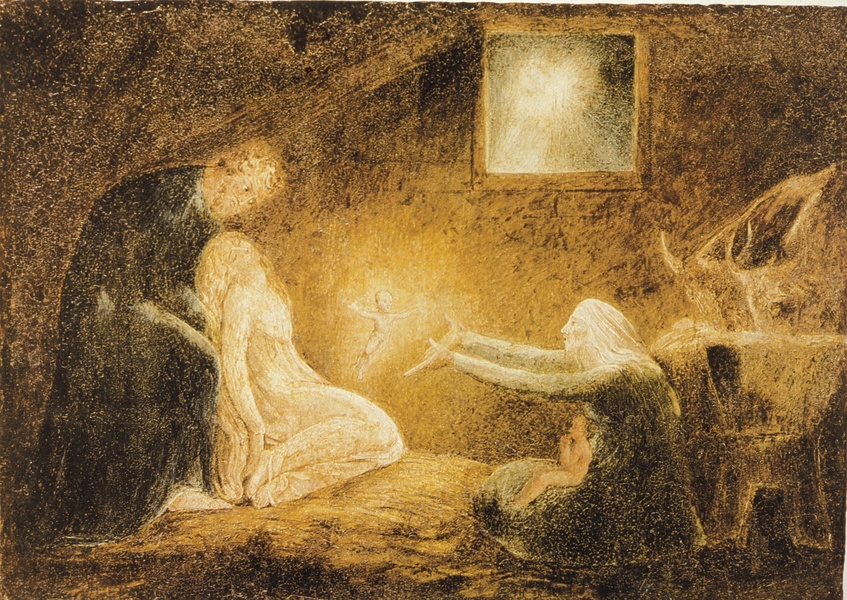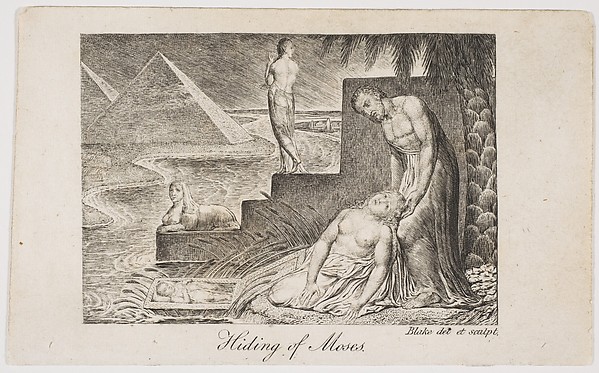Chapter1
[13] And the Egyptians made the children of Israel to serve with rigour:
[14] And they made their lives bitter with hard bondage, in morter, and in brick, and in all manner of service in the field: all their service, wherein they made them serve, was with rigour.
[15] And the king of Egypt spake to the Hebrew midwives, of which the name of the one was Shiphrah, and the name of the other Puah:
[16] And he said, When ye do the office of a midwife to the Hebrew women, and see them upon the stools; if it be a son, then ye shall kill him: but if it be a daughter, then she shall live.
Chapter 2
[1] And there went a man of the house of Levi, and took to wife a daughter of Levi.
[2] And the woman conceived, and bare a son: and when she saw him that he was a goodly child, she hid him three months.
[3] And when she could not longer hide him, she took for him an ark of bulrushes, and daubed it with slime and with pitch, and put the child therein; and she laid it in the flags by the river's brink.
[4] And his sister stood afar off, to wit what would be done to him.
The infant set afloat on the Nile or the Hiding of Moses in the Tate Collection is not available for publication but here is a link to it.
Blake's picture of the infant Moses set afloat on the Nile calls our attention first to the fact that the scene took place in Egypt, the land to which the Israelites voluntarily moved to escape famine in their homeland. When their benefactor was no longer in power they became slave labor for the Egyptians. To control increase in the Israelite population the Pharaoh ordered that the male infants be killed. In order to avoid having her son killed, Moses' mother hid him in a floating basket on the edge of the Nile. In this scene the mother is leaving the infant to an unknown fate. The child is rescued by a daughter of Pharaoh and grows up in an Egyptian household.
The anxiety of the mother and father is evident in the picture. Realistically, they feared that the child would not survive. However the fears of the parents were not realized. The role that Moses played in the history of his people is well known. He secured their release from slavery, led them through the wilderness, presented them with a covenant from God and received the commandments from God which were to define and shape the people of Israel.
Images which Blake created of the infant Jesus and his parents closely resemble Moses and his parents. Blake was emphasizing that the role of Jesus in the New Testament and of Moses in the Old Testament are parallel. Both had their lives threatened by the authorities as infants, both emerged from the land of Egypt to introduce new teachings to their people. Both offered freedom to enslaved people: those enslaved in Egypt, and those enslaved to the 'law of sin and death'.
Notice the similarity in this illustration to Milton's On the Morning of Christ's Nativity.
This tempera painting of the nativity which Blake produced for Thomas Butts is available on wikipedia. The original is in the Philadelphia Museum of Art.

The culmination of the spiritual development which was traced through the events of the Old Testament and hinged on the character of Moses, came to fruition in Jesus. Blake in his characteristic way ties together disparate events: in this case through visual rather than verbal images.
 |
| Metropolitan Museum of Art Engraving of Hiding of Moses 1825 |
1 comment:
"The culmination of the spiritual development which was traced through the events of the Old Testament and hinged on the character of Moses, came to fruition in Jesus."
Indeed! Thanks so much, Ellie -- perfect for my Sunday morning reading/viewing!
Post a Comment